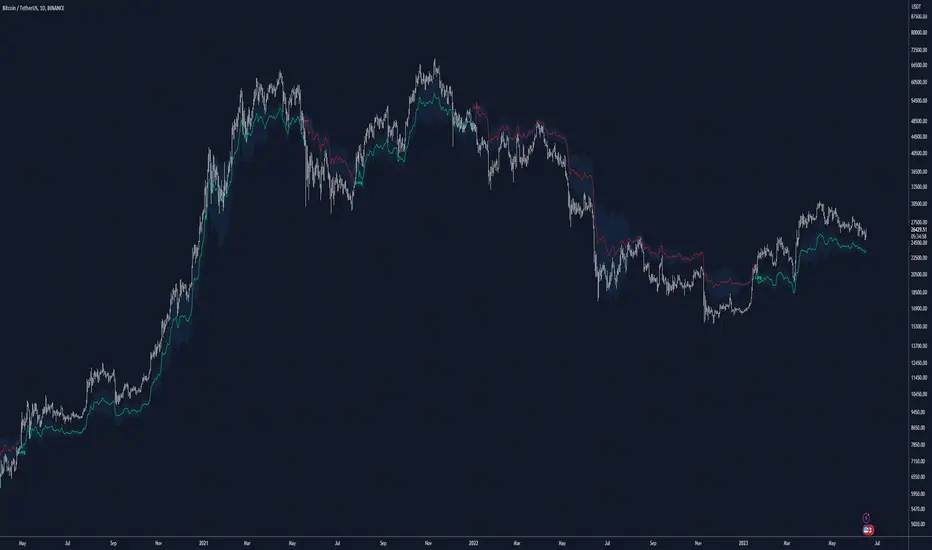PROTECTED SOURCE SCRIPT
AcceleratorATR

A more rapid successor to the volatility-calibrated ATR. It uses a volatility estimator in the calculation (doesn't underestimate volatility as much and more responsive in ranges) as a multiplier on a typical ATR. The volatility estimator is not as biased as classic estimators. There is an option to allow the root values to be dependent on the timeframe or manually tuned. The higher the value of the root, the higher the frequency of signals. The length and log power are not as significant parameters as the root but the script is still sensitive to these parameters.
A long or short signal does not indicate a trade should be taken, only to highlight the change in direction. It is often better to wait for a pullback (in the area of a long) before you take a trade. To be used in conjunction with your system.
A long or short signal does not indicate a trade should be taken, only to highlight the change in direction. It is often better to wait for a pullback (in the area of a long) before you take a trade. To be used in conjunction with your system.
Protected script
This script is published as closed-source. However, you can use it freely and without any limitations – learn more here.
Disclaimer
The information and publications are not meant to be, and do not constitute, financial, investment, trading, or other types of advice or recommendations supplied or endorsed by TradingView. Read more in the Terms of Use.
Protected script
This script is published as closed-source. However, you can use it freely and without any limitations – learn more here.
Disclaimer
The information and publications are not meant to be, and do not constitute, financial, investment, trading, or other types of advice or recommendations supplied or endorsed by TradingView. Read more in the Terms of Use.